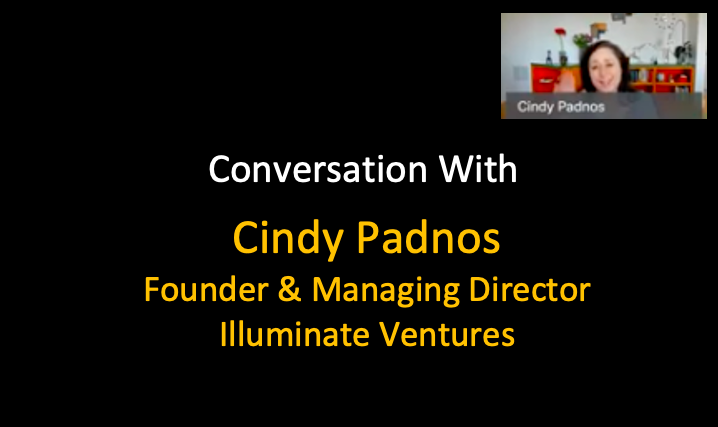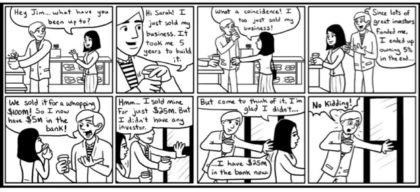Seed Capital
1Mby1M Virtual Accelerator Investor Forum: With Ken Elefant, Partner and Co-Founder at Sorenson Ventures 2021 (Part 5)
Sramana Mitra: When you back these seed-stage companies, what are you looking for? It’s not inexpensive to build like this, so are you writing checks on a concept based on the background and domain expertise of the entrepreneurs?
Ken Elefant: Most of our investments in Sorenson Ventures are pre-revenue. It could just be an entrepreneur with two or three folks with them. We are carte blanched to invest up to $5 million in ARR, so sometimes our investments have a little bit more. We are typically lead or co-lead in all of our investments.
>>>1Mby1M Virtual Accelerator Investor Forum: With Ken Elefant, Partner and Co-Founder at Sorenson Ventures 2021 (Part 4)
Sramana Mitra: On your point on needing smart engineers to do things, it has always been my observation that there are only a finite number of those people. We need abstractions and we need ways to enable and equip people who are not these really smart engineers.
This is one of the reasons why I find PaaS to be an interesting trend. It enables a large body of developers to develop stuff and things on top of stacks that they don’t necessarily need to build. You don’t need to be that savvy to be able to build a product and build a solution to problems.
>>>524th Roundtable Recording on March 25, 2021: With Cindy Padnos, Illuminate Ventures
In case you missed it, you can listen to the recording here:
Roundtable Recap: March 25 – Spotlight on Art Market Disruption Ideas

During this week’s roundtable, we had as our guest Cindy Padnos, Founder and Managing Director at Illuminate Ventures. Cindy discussed the impact of Covid on the fund’s portfolio, as well as trends she sees.
ArtandFound.co
As for our entrepreneur pitch, we had Aditya Mehta from Mumbia, India, pitch Art&Found, a digital art marketplace based on NFTs.
You can listen to the recording of this roundtable here:
1Mby1M Virtual Accelerator Investor Forum: With Ken Elefant, Partner and Co-Founder at Sorenson Ventures 2021 (Part 3)
Sramana Mitra: When you are investing in such companies that are supplemental to other ecosystems like the Zendesk ecosystem and others, are they getting substantial support from those ecosystems?
In the case of Salesforce, they have a marketplace in AppExchange and Zendesk has been trying to support the ecosystem as well. What is the experience of company building for such a company that has other players that already have a significant presence in the market?
>>>1Mby1M Virtual Accelerator Investor Forum: With Ken Elefant, Partner and Co-Founder at Sorenson Ventures 2021 (Part 2)
Sramana Mitra: Basically, the company can access each enterprise on their different levels of vulnerability and then present that as an opening part of the sales cycle.
Ken Elefant: They have invented this space called Attack Servers Management. They could go into an enterprise and quickly bring up an analysis that shows the vulnerabilities.
>>>Best of Bootstrapping: Looking at Terms with Heidi Roizen of Threshold Ventures

If you haven’t already, please study our free Bootstrapping course and the Investor Introductions page.
Heidi Roizen, Partner at Threshold Ventures, discusses her important article, “How to Build a Unicorn From Scratch – and Walk Away with Nothing,” and imparts crucial lessons to entrepreneurs on how to look at terms in a venture financing situation.
Sramana Mitra: We have been living in world of unicorn mania. We have tried to put some perspective on this issue. There are good sides to the unicorn mania. There are bad sides to the unicorn mania. Let’s start with one particular piece that you wrote, which I thought was very well-analyzed. The piece was titled How to Build a Unicorn From Scratch – and Walk Away with Nothing.
Heidi Roizen: I’ve been doing this for a long time, and I’ve seen cycles come and go. There are two things every entrepreneur should be aware of that they really aren’t aware of. One is, not everything goes well all the time. If you’re an entrepreneur, you fully believe that everything is going to go great for you. The reality is, that is almost never the case. The second thing is, our economy moves in cycles. The macroeconomic conditions will affect your ability to raise money and prosper.
1Mby1M Virtual Accelerator Investor Forum: With Ken Elefant, Partner and Co-Founder at Sorenson Ventures 2021 (Part 1)

If you haven’t already, please study our free Bootstrapping course and the Investor Introductions page.
Ken Elefant, Partner and Co-founder at Sorenson Ventures, talks about trends and his investment thesis.
Sramana Mitra: Tell us a bit about your funds. I know you have been working with your fund one and you are in the middle of raising your fund two. Fund one was about $100 million, right?
>>>